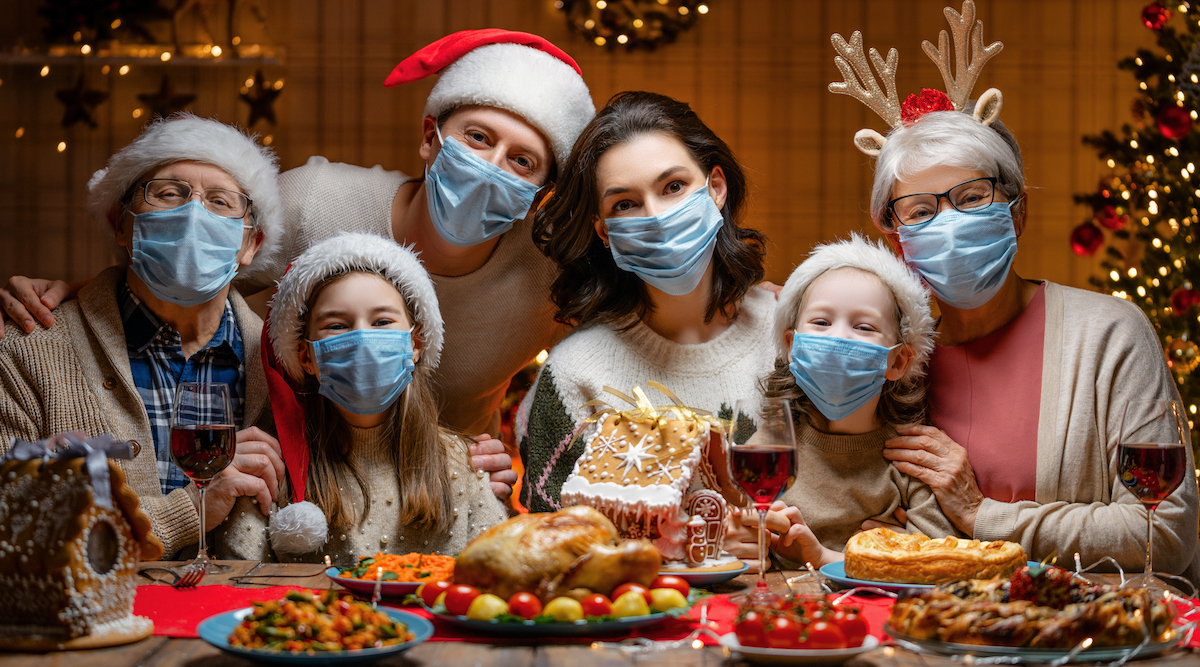<< Back
Tested Positive? Symptoms? Some Holiday COVID What-Ifs

December 21, 2021
Omicron, in a blink, has become the dominant COVID-19 strain in the United States less than a month after first identified in South Africa.
But it’s not the only variant spreading through Connecticut and the rest of the nation. Delta, a potentially more lethal variant, still remains a primary threat.
“I’m trying to dial the message back about Omicron,” says Dr. Ulysses Wu, Hartford HealthCare’s System Director of Infection Disease and Chief Epidemiologist, “because there’s a variant that we should be really scared of right now and that’s Delta. We shouldn’t be behaving any differently from Delta to Omicron because they’re both dangerous.”
So how should we behave, scientifically speaking, as the holidays arrive?
Here are some tips based on information from the Centers for Disease Control and Prevention:
Is It OK To Host or Attend a Holiday Gathering?
Enjoy the holidays, but put your health and your family’s health first:
- If you are sick or have symptoms, don’t host or attend a gathering.
- Testing can give you information about your risk of spreading COVID-19.
- Consider using a self-test before joining indoor gatherings with others who are not in your household. A positive self-test result means that you have an infection and should avoid indoor gatherings to reduce the risk of spreading disease to someone else.
- A negative self-test result means that you may not have an infection. Repeating the test with at least 24 hours between tests will increase the confidence that you are not infected.
- Try, as best you can, to stay 6 feet from people you don’t live with.
What Are Common COVID-19 Symptoms And How Soon Do They Appear?
Some of these symptoms might appear 2-14 days after exposure to the virus:
- Fever or chills.
- Cough.
- Shortness of breath or difficulty breathing.
- Fatigue.
- Muscle or body aches.
- Headache.
- New loss of taste or smell.
- Sore throat.
- Congestion or runny nose.
- Nausea or vomiting.
- Diarrhea.
For a list of the Top 5 Omicron symptoms, click here.
I’ve Tested Positive, I’m Vaccinated, But Have No Symptoms
Dr. Rochelle Walensky, the CDC Director, said Dec. 21 the agency could reduce the current 10-day isolation recommendation for anyone, regardless of vaccination status, who tests positive for COVID-19.
For now, it’s only OK to be around other people if:
- 10 days since symptoms first appeared and
- 24 hours with no fever without the use of fever-reducing medications and
- Other symptoms of COVID-19 are improving. (Loss of taste and smell may persist for weeks or months after recovery and need not delay the end of isolation.)
Otherwise, avoid travel and reconsider holiday gatherings. If you want to play safe, stay home.
Note: These guidelines do not apply to people who have severe COVID or weakened immune systems.
I’ve Tested Positive, I’m Vaccinated, And I Have Symptoms
Pending a CDC update, isolate for 10 days after your test date. If you still have no symptoms, you can be around other people. If you develop symptoms, the 10-day isolation period restarts from the date of those symptoms.
I’ve Tested Positive and I’m Unvaccinated
It doesn’t matter if you’re unvaccinated or fully vaccinated: If you test positive, the CDC says you should isolate 10 full days.
I’ve Been Exposed To COVID-19, I’m Unvaccinated, And I Haven’t Been Tested
The CDC says you should begin quarantine immediately:
- Stay home for 14 days after your last contact with a person who has COVID-19.
- Watch for fever (100.4 degrees), cough, shortness of breath or other symptoms of COVID-19.
- If possible, stay away from people you live with, especially people who are at higher risk for getting very sick from COVID-19.
Get tested as soon as possible.